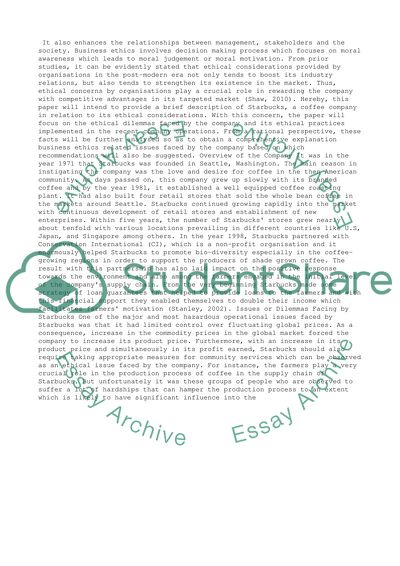Cite this document
(“Evaluation of Starbucks Dilemmas Essay Example | Topics and Well Written Essays - 2750 words”, n.d.)
Retrieved from https://studentshare.org/business/1393110-evaluation-of-starbucks-dilemmas
Retrieved from https://studentshare.org/business/1393110-evaluation-of-starbucks-dilemmas
(Evaluation of Starbucks Dilemmas Essay Example | Topics and Well Written Essays - 2750 Words)
https://studentshare.org/business/1393110-evaluation-of-starbucks-dilemmas.
https://studentshare.org/business/1393110-evaluation-of-starbucks-dilemmas.
“Evaluation of Starbucks Dilemmas Essay Example | Topics and Well Written Essays - 2750 Words”, n.d. https://studentshare.org/business/1393110-evaluation-of-starbucks-dilemmas.


